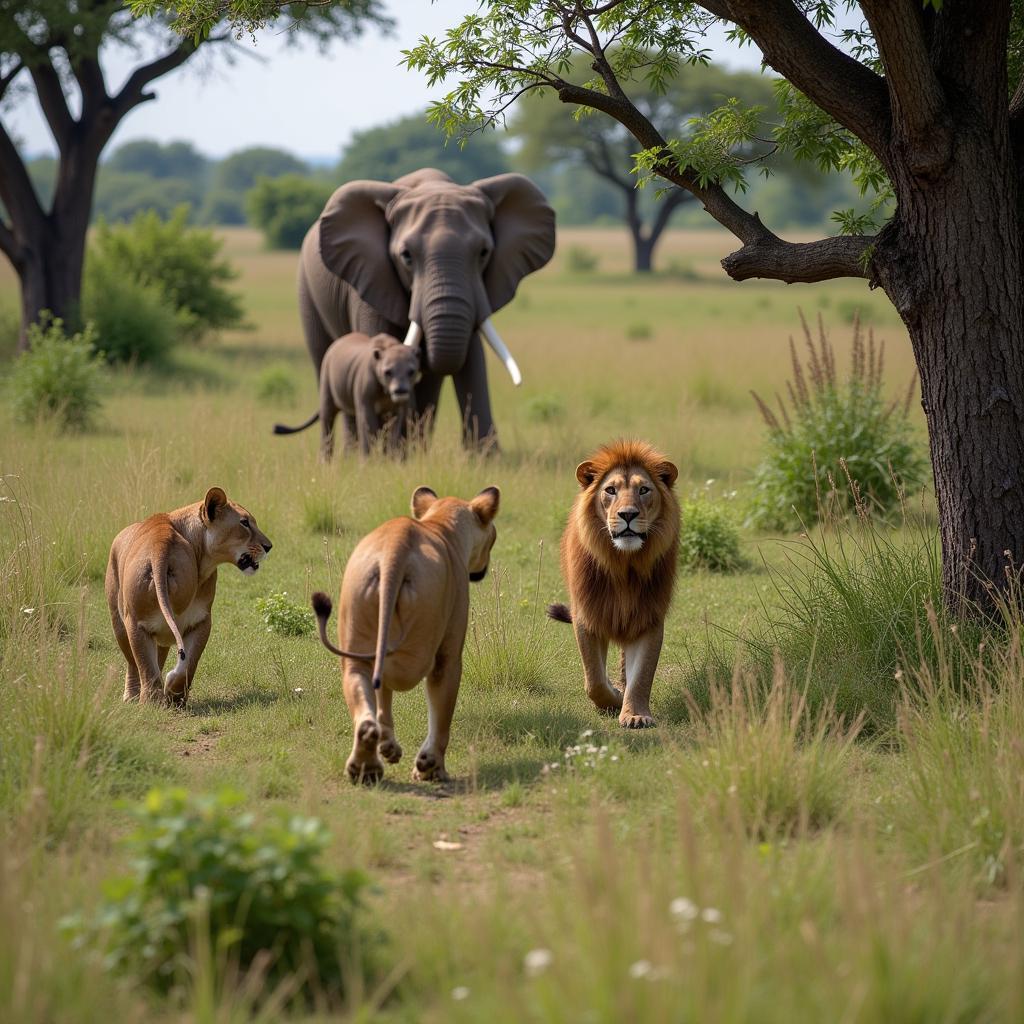The Majestic African Elephant Tusks: A Symbol of Power and Peril
African Elephant Tusks, magnificent ivory extensions protruding from their upper jaw, have captivated humans for centuries. These iconic features, however, have also become a source of immense peril for the elephants themselves, driving them towards the brink of extinction due to the insatiable demand for ivory. Let’s delve into the fascinating world of these remarkable appendages, exploring their biological significance, cultural importance, and the ongoing fight for their protection.
African Bush Elephant tusks serve a multitude of purposes, vital for their survival in the harsh African savanna. They are primarily used for digging, foraging for food, stripping bark from trees, and defending themselves against predators. Tusks are also crucial for establishing dominance within the herd, playing a significant role in social interactions and mating rituals. Did you know that tusks are essentially elongated teeth, constantly growing throughout an elephant’s life? Their length and thickness can vary significantly, depending on genetics, age, and gender. Learn more about the impressive tusks of the male African bush elephant. african bush elephant male long tusks
The Biological Significance of African Elephant Tusks
African elephant tusks are more than just striking adornments; they are essential tools for survival. These ivory appendages, composed primarily of dentine, are deeply rooted in the elephant’s skull and connected to a complex network of nerves and blood vessels. The continuous growth of the tusks allows elephants to compensate for wear and tear caused by their daily activities. From digging for water during droughts to uprooting trees for sustenance, African elephant tusks play a pivotal role in their ecological niche.
Cultural Significance and the Ivory Trade
Tragically, the beauty and perceived value of african elephant tusks have also led to their downfall. For centuries, ivory has been a highly sought-after commodity, fueling a lucrative illegal trade that has decimated elephant populations across Africa. The demand for ivory, particularly in Asian markets, has driven poachers to relentlessly hunt these majestic creatures, leaving a trail of carnage in their wake. This insatiable greed has pushed some elephant populations to develop a genetic trait of tusklessness, a stark reminder of the devastating impact of human activity.
What are the different types of African elephant tusks?
Both male and female African elephants possess tusks, although there can be variations in size and shape. While male tusks tend to be larger and more curved, female tusks are generally smaller and straighter. It’s worth noting that not all African elephants have tusks. Some populations, particularly those subjected to intense poaching pressure, have seen a rise in the number of tuskless individuals due to a genetic adaptation. For further information on female African bush elephant tusks, you can find interesting insights here. african bush elephant female long tusks Discover fascinating facts about African elephant teeth. african elephant teeth facts
Why are African elephant tusks so valuable?
The high value placed on african elephant tusks stems from their perceived rarity and beauty. Ivory has been used for centuries to create intricate carvings, jewelry, and other decorative objects. This demand, coupled with the dwindling elephant populations, has driven up the price of ivory, making it a lucrative target for illegal poaching. Understanding the name for African bush elephant teeth provides additional context. african bush elephant teeth name One compelling story documents the African elephant with the largest tusks on record. african elephant with the largest tusks on record
Conclusion
African elephant tusks are an integral part of these magnificent creatures’ biology and cultural heritage. However, the insatiable demand for ivory has placed these iconic animals in grave danger. Protecting African elephants and their tusks requires a concerted global effort, encompassing stricter anti-poaching measures, increased public awareness, and sustainable solutions to address the root causes of the ivory trade. We must act now to ensure that future generations can continue to marvel at the majesty of these intelligent and gentle giants.
FAQ
- What are African elephant tusks made of? Ivory, primarily dentine.
- Do all African elephants have tusks? No, some populations have adapted to poaching pressure with tusklessness.
- Why are elephant tusks important? They are crucial for survival, used for digging, foraging, defense, and social interactions.
- What is being done to protect elephant tusks? Anti-poaching patrols, community education, and international efforts to curb the ivory trade.
- How can I help protect African elephants? Support conservation organizations, spread awareness, and avoid purchasing ivory products.
- What is the largest tusk ever recorded? Records exist documenting impressively large tusks, often from historical accounts.
- How do tusks grow? Continuously throughout the elephant’s lifespan.
Need further assistance? Contact us! Phone: +255768904061, Email: kaka.mag@gmail.com Or visit us: Mbarali DC Mawindi, Kangaga, Tanzania. We have a 24/7 customer service team.



